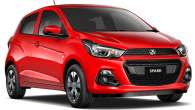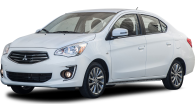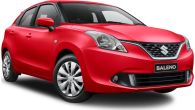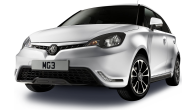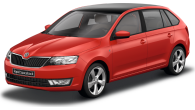Richard Berry road tests and reviews the BMW i3 94Ah with specs, energy consumption and verdict at its Australian launch.
When do start to panic about needing to charge your phone? At what percentage do you begin getting anxious? How low will you go before you feel you have to plug in?A survey of the CarsGuide.com.au office found that out of 37 people eight per cent were already running for the charger when their phone got to 60 per cent, while another eight per cent couldn’t go beyond 50 per cent. At 30 per cent charge 30 per cent of the office were plugging in, then 11 per cent when the phone had 10 per cent left. Then we reach the danger zone inhabited by risk-takers where 11 per cent felt it might be an idea to plug in at 5 per cent charge and then there’s the 1 percenters – five per cent of the office finally felt the need to charge their phone with a single per cent in the tank.
Our phones have trained us to be battery charge aware, and that’ll make our adoption of electric cars and the charging that goes with them easier. Thing is if your phone goes dead the worst it means is you can’t makes calls or go online. If your electric car runs out of charge you become that doofus on the news that night who stopped in the middle lane on the freeway out of the CBD during peak hour causing traffic chaos.
BMW is hoping the dreshly upgraded i3 electric car will remove that range anxiety. See, the first i3 which came out in 2014 had a 60Ah battery, that’s 60 Ampere Hour and it refers to the battery’s capacity. What you need to know and what owners found out very quickly is that in the real world the i3 60Ah could only travel 130km on a full charge. Not far enough for most people.
Now the i3 94Ah has arrived, and BMW says it has a real-world range of 200km. But is that far enough? Is that all that’s changed with the i3? Can your swap you 60Ah for 90Ah longer lasting battery? Will charging it send your home electricity bill off the scale? And does it drive like a toaster?
Design
The i3 was built from the ground up as an all-electric car. BMW hasn’t just taken a 1-Series and given it a kooky exterior and an electric motor nor have they taken a Mini (which they also make) and reskinned that.
Size-wise the dimensions of the new i3 94Ah are identical to the 60Ah at 3999mm, long 2039mm wide, 1578mm tall. To put that in perspective a Toyota Corolla hatch is 3905mm and 1510mm tall, but not as wide at 1695mm from wing mirror to wing mirror.
Inside is just as outside the box as the exterior.
There’s a hybrid Corolla but not an all-electric one in Australia, but the Toyota is a good ruler because everybody knows how big one is. Small car electric rivals to the i3 in Australia are almost non-existent. In 2018 the Tesla Model 3 will arrive in Australia and could become the i3’s worst nightmare, but right now the closest competitor is a Nissan Leaf. The Leaf is 4445mm long, 1770mm wide and 1550mm tall.
The little electric Nissan isn’t a premium offering like the BMW. The i3 also looks alien in its design and is truly different to just about every other car on the road in the way it’s been built.
The i3 has an aluminium chassis that looks like a cafeteria tray which carries the batteries and connects the suspension to the wheels, while the body structure is made from a carbon fibre and plastic.
It doesn’t look like one, but the i3 is a four-door car. Those rear doors open backwards suicide style, but BMW would prefer to call them coach doors. With all doors open the entrance is one large expanse that stretches almost the length of the car with no B-Pillar. BMW assures us that the carbon fibre structure is still incredibly strong.
Inside is just as outside the box as the exterior. There’s the floating media display screen and digital instrument cluster, the stepped dashboard and the steering column-mounted shifter.
There’s a surprising amount of room in the i3.
Plastics are all from recycled bottles, the hard substance used in the dash and doors is actually organic and renewable because it’s made from the kenaf plant which is a weed. The leather seats are coloured using natural methods – in the case of the optional Suite trim it’s tanned with olive leaf extract.
There two other trims available as well, both no-cost options. There’s Lodge which brings woollen cloth material to the seats and Eucalyptus wood to the dash, while the Loft trim adds Carum Spice Grey cloth door panels among other textured surfaces.
Practicality
There’s a surprising amount of room in the i3. In the front a lot of space has been freed up by the lack of transmission tunnel and the column-mounted shifter. Being a tall car headroom up front is excellent, too. There’s plenty of headroom in the back row as well thanks to the scooped-out ceiling. Legroom back there is good and at 191cm I can sit behind my driving position and have just enough space to slide a business card between my knee and the seat back.
Those rear hinged doors in the back do make getting in akin to a scuba diver rolling backwards off a boat, but it’s kind of fun and an easy motion to get used to.
The i3’s boot capacity with the rear seats in place is 260 litres. A Corolla’s is 360 litres. The Leaf does better than both at 370 litres.
Price and features
The i3 60Ah is still available to buy but with the arrival of the 94Ah variant it’s now the entry point into the i3 range at $63,900. That’s how much it cost two years ago, and it’s interesting that BMW hasn’t dropped the price slightly now that the 94Ah is here and costs only two grand more at $65,900. Sounds pricey, but it's a prestige car that's not a whole lot more costly than the $51,500 Nissan Leaf, plus you can bet the Tesla Model 3 will be about the same price.
For an extra $6000 there is a range-extender version of each i3. It’s a two-cylinder engine which generates electricity that tops up the battery. It’s essential for the 60Ah if you plan to cover more miles than just short city commutes.
Coming standard in the i3 94Ah is a 10.25-inch display screen with sat nav, digital radio, rear view camera, front and rear parking sensors and auto parking. The 94Ah also comes standard with DC charging capability which will let you fill up at the super-fast chargers that will become more common in the future. This is a $700 option on the 60Ah.
Motors, batteries and engines
The i3 94Ah has a 125kW/250Nm electric motor mounted on the rear axle and drives the back wheels through a single-speed automatic transmission.
The 94Ah battery has a capacity of 33kWh, of which 27kWh is usable. It’s a sizable increase over the 60Ah which has a usable 19kWh of energy.
Your electricity bill isn’t going to go off the scale. It’s about $5 to fully charge the i3 from home.
The official range for the i3 94Ah when fully charged is 390km but even BMW was quick to point out that 200km was more likely if you throw in hills, hot and cold weather, bumper to bumper traffic and other real world conditions which can sap power quickly.
The range extender petrol engine is a 650cc two-cylinder unit and with a nine-litre fuel tank will give you an extra 130km. This engine is nothing more than an onboard generator though, and is not mechanically connected with the driven wheels.
Fuel consumption
The i3 94Ah consumes 12.6kWh/100km, which is 0.3kWh/100km better than the i3 60Ah.
And as it does not run on fossil fuels, it has zero emissions. Or does it? In Australia 73 per cent of electricity is generated by burning coal, 13 per cent through natural gas, seven per cent hydro, four per cent wind and a staggeringly tiny two per cent from solar.
So if you’re buying an i3 to be environmentally kinder then purchase your electricity though a green energy provider.
The driving experience is not only rewarding in terms of dynamics and a comfortable ride, but it’s stacks of fun, too.
The range extender i3 94Ah will consume an official combined average of 0.6L/100km with 11.3kWh/100km of energy used.
Charging can be done using a wall unit which costs $1700 and takes eight hours to recharge the battery completely. There’s public charging stations run by ChargePoint which allow BMW owners to charge up fully in four hours and for free. And as a last resort there's a cable provided in the car which will plug into a household power point and charge the car up fully in 14 hours.
Your electricity bill isn’t going to go off the scale. It’s about $5 to fully charge the i3 from home.
Driving
If you haven’t driven an i3 then I’ll forgive you for thinking that the 94Ah is all science show with no go. But the truth is the driving experience is not only rewarding in terms of dynamics and a comfortable ride, but it’s stacks of fun, too.
Steering is fast and sharp which is good for darting through city lanes.
Being electric you have all 250Nm of torque from a standstill and that gives you impressive acceleration. We’re talking 0-100km/h in 7.3 seconds. A BMW 220i with a 2.0-litre turbo four-cylinder petrol engine can do it in 7 seconds.
Steering is fast and sharp which is good for darting through city lanes and it has an incredibly tight turning circle of 9.8m.
A large windscreen and A-pillars which turn downwards sharply make for great visibility out the front.
The ride is comfy, but verges on the firmer side which is a BMW trait. We also noticed a sharper than expected little jolt over speed bumps and that could have a lot to do with the low rolling resistance tyres which are known for their hardness.
Apart from this it’s a fun and easy to drive, the balance is near perfect at 53 per cent to the rear and 47 per cent at the front and being rear-wheel drive makes the experience even more enjoyable.
Tyres are super slim at 155/70R19 up front and 175/60 R19 at the back, and having driven the 60Ah with the same tyres we know that when pushed these will start to chirp.
Our test route was purely urban though, which is the natural habitat for the i3. But venturing out onto the freeway at speeds of 110km/h proved no hassle for the i3 at all, and at no point did I feel like a windsurfer trying to cross Bass Strait. If anything it’s the opposite - being able to accelerate so rapidly meant merging and changing lanes could be done super confidently.
We test drove both the range extender and the pure electric i3. After an hour and 45 minutes in the electric-only car and having travelled 44.9km, our electrical consumption was 16.4kWh/100km. That left the battery with just under 75 per cent charge left or 138km off a full charge. Not bad, considering I wasn’t driving conservatively as the BMW executive pointed out when he looked at my chart on the display – I was hitting peaks of 45kWh/100km doing the acceleration party trick.
Just as impressive as the acceleration is the deceleration – regenerative braking recharges the batteries and the friction causes the i3 to slow so quickly that I didn’t need to use the brake pedal.
Safety
The i3 has the maximum five-star ANCAP rating. For those concerned about the strength of the carbon fibre and lack of B-Pillar know this: in 2014 when it was tested the i3 scored 16 out of 16 in the side impact crash test.For $3510 you can option the Innovations Package on the 94Ah which brings AEB and active cruise control.
For child seats you’ll find two top tether anchor points and two ISOFIX mounts in the rear row.
Ownership
The i3 94Ah is covered by a three-year unlimited warranty. BMW says the battery pack is designed to last the entire service life if the i3, but it’s covered by an eight year/100,000km battery warranty.
Servicing is condition-based, but the BMW Service Inclusive capped price plan locks the cost in at $850 for five years or 80,000km.
Samsung SDI currently make the lithium-ion batteries which go into the i3 and within the next couple of years there will be another battery with greater capacity which will offer even longer range. It would be good to see a program that allows owners to upgrade their batteries to those with larger capacities. BMW has told us that such a scheme doesn't exist yet in Australia.
BMW I3 2016:
| Engine Type | Not Applicable, 0.0L |
|---|---|
| Fuel Type | Electric |
| Fuel Efficiency | 0.0L/100km (combined) |
| Seating | 5 |
| Price From | $20,460 - $25,850 |
| Safety Rating |
|
Verdict
A great, fun, easy to drive, environmentally clean and practical car built for the city that looks unlike anything else out there. The i3 94Ah is the i3 we’ve been waiting for from BMW. The 60Ah without the range extender engine just doesn’t have the range needed to keep the anxiety at bay. The 94Ah with its 200km range takes away that stress of running out of power and getting stranded. Just don’t let it get down to 1 percent before looking for a charger.
Would the i3 tempt you into going electric? Tell us what you think in the comments below.
Click here to see more 2016 BMW i3 pricing and spec info.
Range and Specs
| Vehicle | Specs | Price* |
|---|---|---|
| i3 Base | Electric, 1 SPEED AUTOMATIC | $20,460 - $25,850 |
| i3 Hybrid | Unleaded Petrol/Electric, 1 SPEED AUTOMATIC | $22,880 - $28,270 |






.jpg)
.jpg)
.jpg)
.jpg)
.jpg)
.jpg)
.jpg)
.jpg)
.jpg)
.jpg)
.jpg)
.jpg)
.jpg)
.jpg)
.jpg)
.jpg)
.jpg)
.jpg)
.jpg)
.jpg)
.jpg)
.jpg)
.jpg)
.jpg)




















